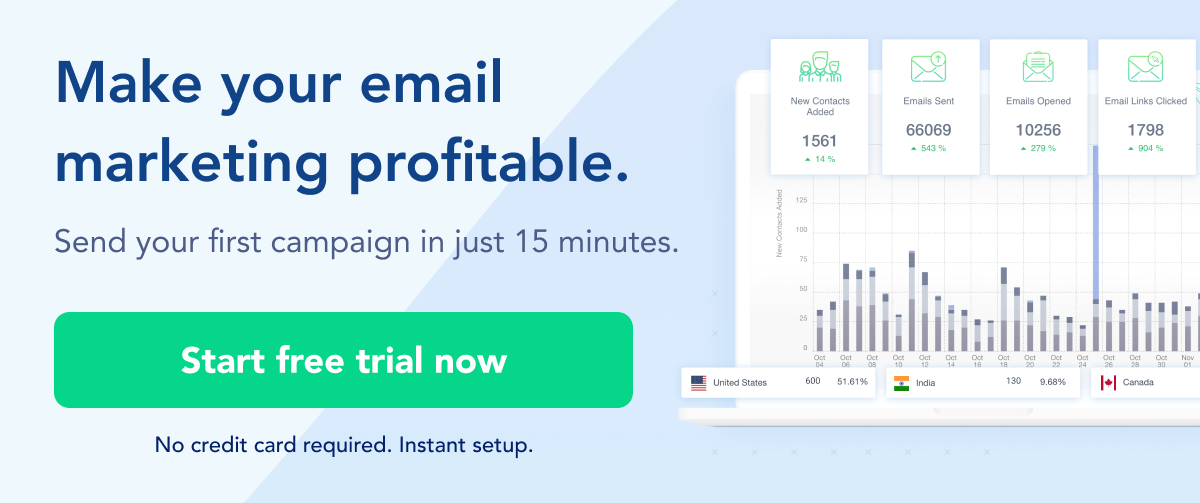In a world where content is king and everyone is a publisher, how do you make your voice heard? Your challenge as a publisher is twofold: creating quality content is just one part of the equation; ensuring it reaches and resonates with your audience is the other. With countless creators vying for attention, this blog dives into practical, no-nonsense email strategies tailored for publishers.
We'll explore how to build an engaged readership and become a well-known name in the overflowing world of content publishing.
Table of Contents
1— Grow your email list
Why Grow Your Email List as a Publisher?
- Direct Connection with Readers: An email list allows you to establish a direct line of communication with your audience. Unlike social media algorithms, email ensures your content reaches those who are genuinely interested.
- Controlled Messaging: Email lets you control the narrative. You can tailor your message, design, and timing, unlike platforms where your content might get lost amidst others.
- Reader Insights: An email list provides valuable data on reader preferences, allowing you to refine your content strategy based on what resonates most with your audience.
- Monetization Opportunities: An engaged email list can be a significant asset for monetizing your content through targeted advertising, sponsored content, or exclusive subscriptions.
Practical Strategies to Grow Your Email List as a Publisher
- Leverage Email Sign-Ups: Integrate sign-up prompts within your articles or content pieces. Readers engaged with your content are more likely to subscribe.
You can also put it on your website homepage so it's very hard to miss.
- Utilize Social Media Channels: Promote your newsletter on your social media platforms. Share snippets or previews of exclusive email content to entice followers to subscribe.
- Content-Specific Lead Magnets: Offer content that is unique to your publishing niche as a lead magnet. This could be exclusive articles, ebooks, or access to webinars that align with your readers' interests.
- Segment Your List: Cater to diverse reader interests by segmenting your email list. This ensures that subscribers receive content that is most relevant to them, increasing engagement and retention.
- Collaborate with Other Publishers: Engage in cross-promotion with publishers in complementary niches. This can expose your content to new audiences who are likely to be interested in your work.
- Create a Referral Program: Encourage your current subscribers to refer others. Offer incentives such as exclusive content, discounts on subscriptions, or access to members-only events.
Here's how The Morning Brew encourages referrals in their existing newsletter —SendX offers a variety of customizable signup form templates, allowing you to swiftly and efficiently begin gathering email addresses. Tailor these templates to your specific requirements and start building your email list with ease.
Get your 14-day free trial here and check out other features too.
2— Personalize email content
Emails with personalized subject lines are more likely to be opened.
But personalization goes beyond the subject line.
Personalized content resonates more with readers, increasing the likelihood they'll engage with your emails and your published content.
When readers see content that aligns with their interests, experiences, or needs, it feels more relevant to them. This relevance triggers a stronger emotional response and makes the content more memorable and engaging.
With so much content available, readers often experience decision fatigue when it comes to choosing what to read. Personalized content simplifies this decision-making process by presenting them with options that are more likely to align with their preferences.
How to implement personalized content curation as a publisher
- Segment your audience: Divide your email list based on reader interests, behavior, or demographics. This could be based on the types of articles they read, their location, age group, etc.
- Tailor content for segments: Send different content to different segments. For instance, if you have a segment interested in technology, curate emails with your latest tech articles or reviews.
- Utilize reader behavior data: Use data from your website and past emails to understand what each subscriber is most interested in. Then, curate content in your emails based on these insights.
- Personalize subject lines: Use the reader’s name or reference their interests in the subject line to grab attention.
- Recommend articles based on past reads: Include a section in your emails that suggests articles similar to what the reader has previously enjoyed on your platform.
- Regularly update segments: People’s interests can evolve. Regularly update your segments based on ongoing reader behavior and feedback.
3— Leveraging automated email campaigns
Automated email campaigns are pre-designed email sequences that are triggered by specific actions or criteria, and sent automatically to subscribers. This automation ensures timely, relevant, and personalized communication with minimal ongoing manual intervention.
They save time and resources, allowing you to consistently reach their audience without manual effort for each email.
Ideas to implement automated email campaigns:
- Welcome Series for New Subscribers: Create an automated series of emails that introduces new subscribers to your publication, sets expectations, and showcases key content or features.
Here's an example of Welcome email —
- Behavior-Triggered Emails: Set up emails triggered by specific reader actions, like visiting a particular section of your site or downloading a resource. These could include follow-up information, related articles, or special offers.
- Regular Content Digests: Automate a regular email that curates recent articles, most-read content, or personalized recommendations based on the subscriber's reading history.
Here's an example of content digest / weekly email from Paris Review —
- Re-engagement Campaigns: Identify subscribers who haven't engaged for a while and send them automated emails to rekindle their interest, maybe with a summary of what they've missed or exclusive content.
- Subscriber Milestones: Celebrate subscriber milestones (like the anniversary of their subscription) with automated emails. This could include special content, a thank you message, or a discount on subscription renewal.
- Feedback Requests: Automate emails asking for feedback on recent articles or overall content experience, showing subscribers that their opinions are valued and used to shape future content.
You can use tools like SendX to create automated emails with ease. Get a 14-day free trial here.
4— Use interactive content in emails
Interactive content refers to any type of content that requires and encourages active participation from its audience, rather than just passive consumption. It's designed to engage users and invite them to interact with the content in a meaningful way.
This interaction can vary from simple actions like clicking or swiping to more complex activities like answering questions or making choices.
For example, here's an email from Daily Carnage requiring people to reply to click on one of the options —Examples of Interactive Content:
- Quizzes and Polls: Users answer questions or give their opinions, often seeing results or comparisons based on their inputs.
- Interactive Infographics: Users can click on different parts of the infographic to reveal more information or data.
- Calculators or Tools: Users input information and receive customized results, such as a mortgage calculator on a finance website.
- Interactive Videos: Users make choices that influence the direction or outcome of the video.
- Games: Engaging users in a playful manner, often related to the content or products being promoted.
By integrating interactive content into email campaigns, publishers can create a more engaging and memorable experience for their subscribers. This approach not only entertains and involves the reader but also strengthens their connection with your brand and content.
5— Offer valuable & varied content
By offering value and variety, publishers can create a rich, engaging email experience that not only retains current subscribers but also attracts new ones. This strategy involves understanding and catering to the multifaceted interests of your audience, providing them with a range of content that educates, entertains, and enriches their experience with your brand.
By offering a variety of content, you cater to the different interests and needs of your audience, leading to higher satisfaction and retention rates. Regularly providing high-quality, diverse content establishes your brand as an authoritative and trustworthy source in your field.
Ideas for including variety in your content:
- Curated Content Mix: Regularly include a mix of articles, interviews, industry news, tips, and reviews relevant to your audience's interests. For example, a literary publisher’s newsletter might include a bestselling author interview, a book review, writing tips, and updates on literary events.
- Behind-the-Scenes Content: Share insider insights into the publishing world, like the process of book selection, editorial decisions, or author spotlights. This adds a unique and engaging element to your content repertoire.
- User-Generated Content: Encourage readers to contribute their own content, such as book reviews or articles, and feature them in your newsletters. This not only adds variety but also fosters community.
- Regular Themed Issues: Create special themed issues of your newsletter (like a holiday reading list or summer writing contest) to keep the content dynamic and seasonally relevant.
Conclusion
Take these insights on email marketing strategies and put them into action. Start by picking one strategy that resonates most with your publishing goals—perhaps it's growing your email list with tailored content, or diving into automated campaigns.
Implement it, measure the results, and iterate. Your next step is clear: choose a strategy, apply it, and observe the difference it makes. This focused approach will not only enhance your email marketing efforts but also pave the way for a more engaged and loyal readership.



